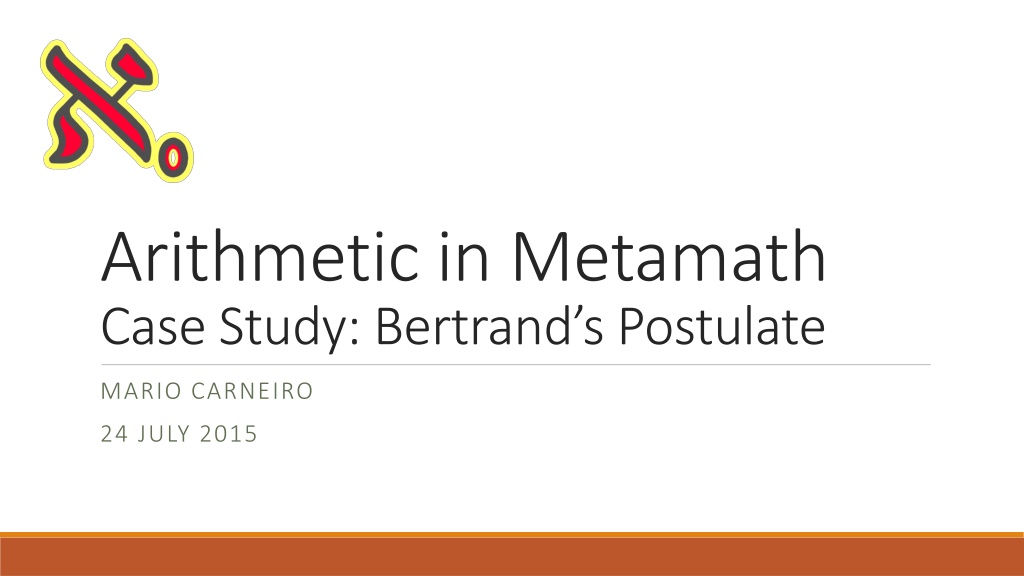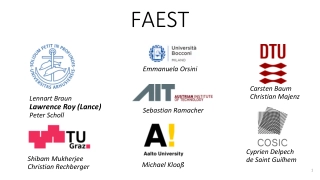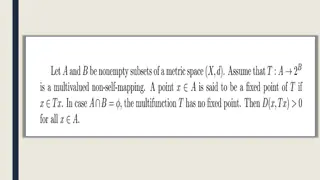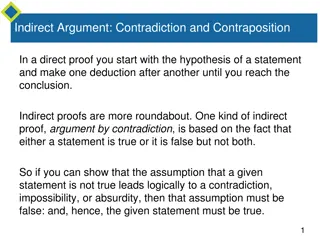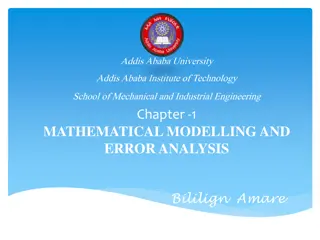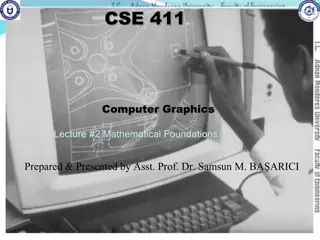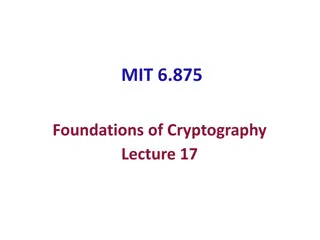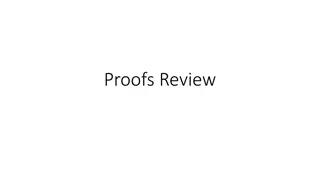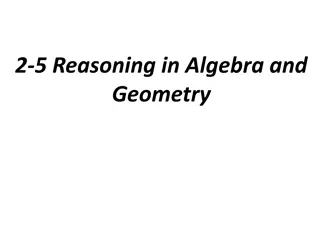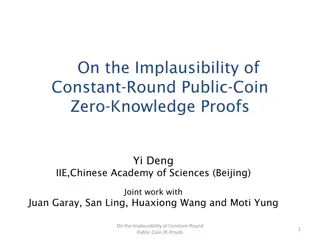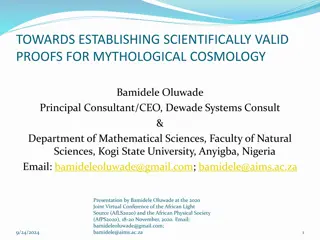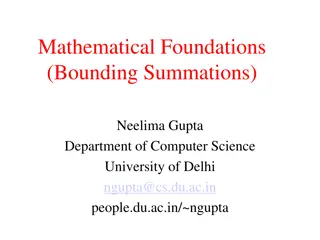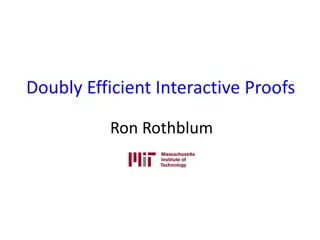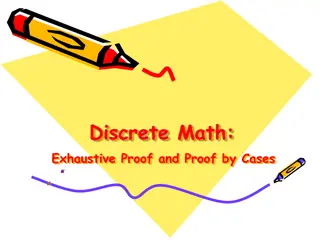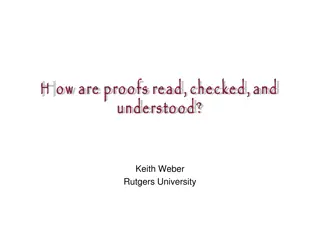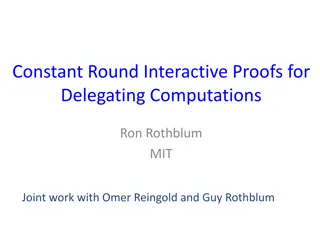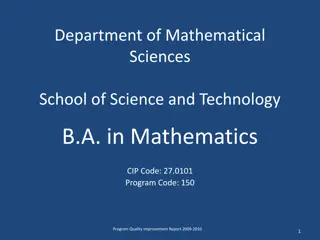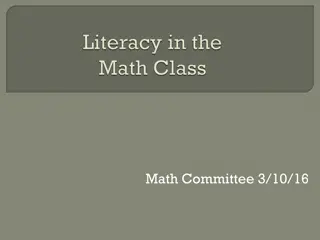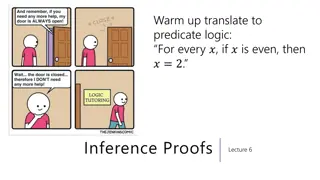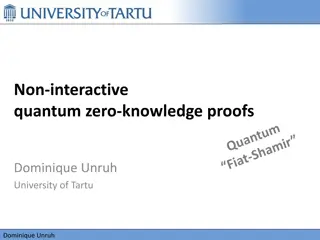Exploring Metamath: A Computer Language for Mathematical Proofs
Metamath is a computer language designed for representing mathematical proofs. With several verifiers and proof assistants, it aims to formalize modern mathematics using a simple foundation. The Metamath-100 project is focused on proving a list of 100 theorems, with significant progress made in proving various mathematical concepts and theorems. The system works by defining theorems and axioms with hypotheses and conclusions, ensuring that symbols are given meanings through definitions. Each step involves direct substitutions based on previous theorems or axioms, emphasizing the importance of precise definitions in mathematical reasoning.
Download Presentation

Please find below an Image/Link to download the presentation.
The content on the website is provided AS IS for your information and personal use only. It may not be sold, licensed, or shared on other websites without obtaining consent from the author. Download presentation by click this link. If you encounter any issues during the download, it is possible that the publisher has removed the file from their server.
E N D
Presentation Transcript
Arithmetic in Metamath Case Study: Bertrand s Postulate MARIO CARNEIRO 24 JULY 2015
What is Metamath? A computer language for representing mathematical proofs The Metamath spec is two pages, one verifier exists in 300 lines of Python Eight independent verifiers exist in eight different languages Two proof assistants (MM-PA and mmj2) with another (smm) in development A project to formalize modern mathematics from a simple foundation Four major databases ZFC set theory (set.mm) Over 25000 proofs, 500K lines, 24M file HOL type theory (hol.mm) Intuitionistic logic (iset.mm) NF set theory (nf.mm) Including Specker s proof of AC
Metamath 100 A project to prove the Formalizing 100 Theorems list tracked by Freek Wiedijk Currently 55 theorems proven (one short of Isabelle) New since last year: (in chronological order) Divergence of Harmonic series Lagrange subgroup theorem Number of Combinations Divisibility by 3 Lagrange four-square thm Factor and Remainder thms Basel problem Divergence of inverse primes Fundamental thm of Calculus Mean value theorem Fundamental thm of Algebra Sum of angles in a triangle Solutions to Pell s equation Liouville s theorem Sylow s theorem Wilson s theorem Erd s-Szekeres theorem Derangements formula Leibniz series for ? Konigsberg Bridge problem Birthday problem Ramsey s theorem Solution to a Cubic Solution to a Quartic GCH implies AC (Wednesday) Ptolemy s theorem Law of Cosines Quadratic reciprocity Sums of two squares Arithmetic/Geometric means
Metamath 100 Quartic Formula Cubic Formula Birthday Problem Bertrand s Postulate
How does it work? A theorem or axiom has a list of hypotheses and a conclusion, which are sequences of constant and variable symbols i.e. ? is a variable, is a constant Definitions are the same as axioms A separate program uses a simple checklist to ensure definitions are conservative 2 is a constant symbol; its definition is given by the definition/axiom 2 = 1 + 1
How does it work? Each step is a direct substitution for the variables in a previous theorem or axiom, possibly with hypotheses No symbol is meaningful until it is given a definition, so a number like 999 will be a syntax error unless it is defined and even then it may not necessarily be defined to mean 103 1 It is possible to define arbitrary syntax with multiple variables like ? ? Ambiguity is not allowed: ? ? is not valid because ? ? ? has two parse trees Prefix syntax like ?? are always valid
Bertrands Postulate There is a prime between ? and 2? Most proofs, like Erd s s, start with: Assume that ? > 4000. That s a lot of base cases! These base cases are addressed with the sequence 2,3,5,7,13,23,43,83,163,317,631, 1259,2503 which (we claim) contains only primes How to prove a number is prime? Trial division Pocklington s theorem (thank you Mizar) Need a good way to handle large arithmetic calculations
The decimal operator Define ;?? = 10? + ? Ex: ;13 = 10 1 + 3, ;;269 = 10 10 2 + 6 + 9 Base 10, not base 4 Structure of a decimal term is as a tree of low digit higher digits nodes Technically allows nonstandard constructions such as ;2;69 = 89 but these are not used in the algorithm Ten has two representations the symbol 10 and ;10
Building blocks We can recurse over the tree (list) structure of a term The basic algorithms for addition and multiplication can be defined recursively over the structure Algorithms like Karatsuba require splitting the input digit string in half, which cannot be done in one step but can be done with a helper theorem in O(n) steps Asymptotics similar to list operations in Lisp Similar techniques can be applied to store many data structures, like graphs (see konigsberg)
The algorithm Proofs are context free (always the same steps given the same input assertion) Allows for a simple recursive structure: Decide what theorem to apply based on the form of the goal, and then prove the resulting subgoals We can evaluate terms as part of determining the theorem to apply Evaluate here means to convert the term ;;123 to the integer 123, or evaluate a multiplication or addition using Mathematica s native operations This allows us to fail quickly if we are asked to prove the unprovable The reverse is also possible, converting 123 to ;;123 Ex: if the goal is of the form ;?? < ;?? and eval ? eval ? , then apply decltc (if the goal is true then the subgoals will be too) decltc
The result 2exp8 $p |- ( 2 ^ 8 ) = ; ; 2 5 6 $= ( c2 c5 cdc c6 c1 c4 c8 2nn0 4nn0 nn0cni c9 1nn0 6nn0 9nn0 cmul co nncni c3 2cn caddc 4t2e8 mulcomli 2exp4 deccl eqid mulid1i 1p1e2 5nn0 9nn 6nn 9p6e15 addcomli decaddci 3nn0 oveq1i 6p3e9 eqtri 6t6e36 decmul1c decmul2c numexp2x mulid2i ) AABCZDCEDCZFGHIFAGFIJSUAUBUCEDVCDVDKVDEDLMUDZLMVDUEZMNEDBAVDEOPKL MNVDVDVEJUFUGUHKDEBCKUIQDUJQZUKULUMEDKDDRVDMLMVFMUNEDOPZRTPDRTPKVHDRTDVGVBU OUPUQURUSUTVA $.
Limitations This is a limited domain theorem prover Can prove any true statement using: The symbols 0,1,2,3,4,5,6,7,8,9,10 The operators + ; < The operators , 0, . Additions are possible for handling e.g. exponentiation Most (all?) numerical theorems (involving only concrete numbers, not variables) can be reduced to addition, multiplication, and strict order of nonnegative integers, so this is not a big restriction
Success stories The first version of the arithmetic algorithm was created in Feb 2014 Used for the proof of bpos (Bertrand s postulate) bpos The second version was made in Apr 2015, concurrent with this paper http://arxiv.org/abs/1503.02349 (http://arxiv.org/abs/1503.02349) Used for the proof of log2ub (log2 <253 log2ub birthday 365), a lemma for birthday (the Birthday problem) We don t need to be afraid of big numbers anymore (i.e. casual usage when convenient) Used for the cubic and quartic equations, where numbers like 33= 27 and 44= 256 appear cubic quartic
Why did it take so long? Metamath, like many formal systems, is geared toward abstract math Most abstract math does not need numbers larger than 10 Computers are comfortable with bigger numbers than humans Automation in Metamath is in its infancy This is the first Metamath theorem prover which produces complete proofs Metamath does have a step search of depth up to around 3 Much more is planned, and current work on the new smm proof assistant promises user scripts like HOL proof programs
Flyspeck Flyspeck is Tom Hales recently completed project to prove the Kepler Conjecture in HOL Light and Isabelle Is it feasible to port Flyspeck to Metamath? Not yet A Metamath proof verifies in linear time, but the proofs are longer The length of a Metamath proof is proportional to the running time of a HOL Light proof How to optimize for Metamath No searches: you already know the answer! Metamath proves NP-hard problems in polynomial time (cf. Lu s offline oracles ) Spend more time making the proofs shorter Round all numbers to the minimum needed to establish an inequality
